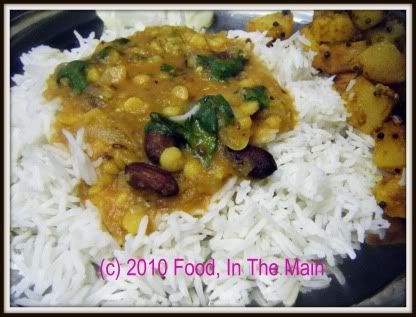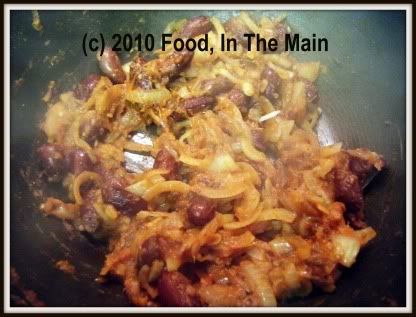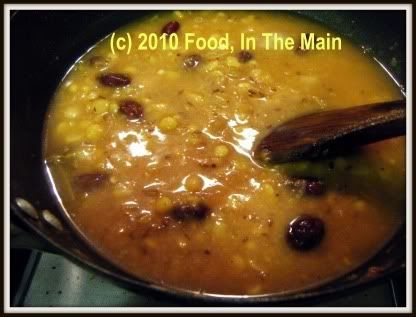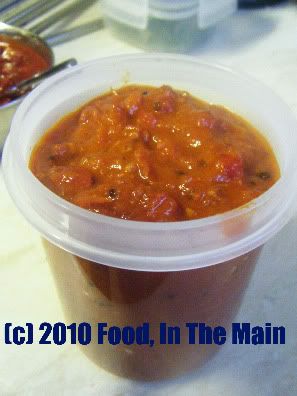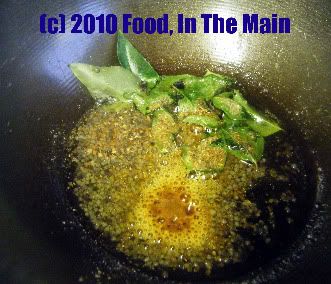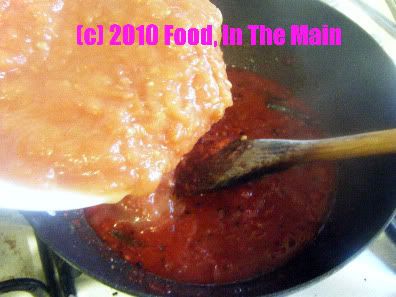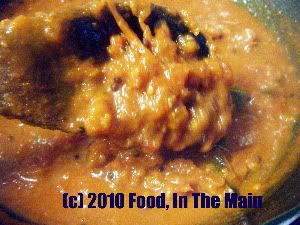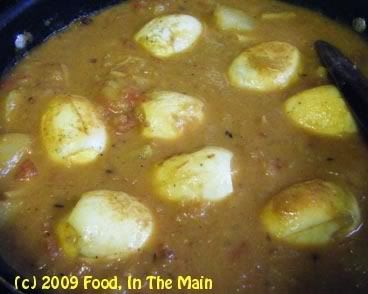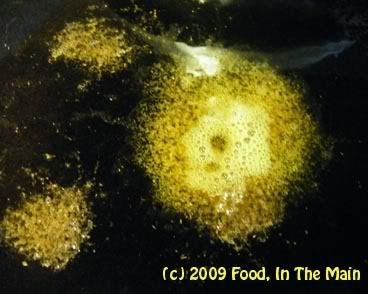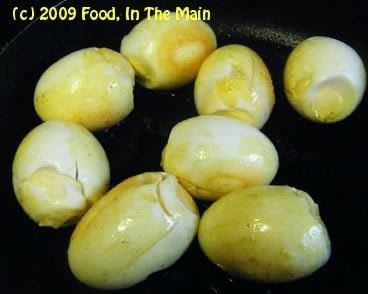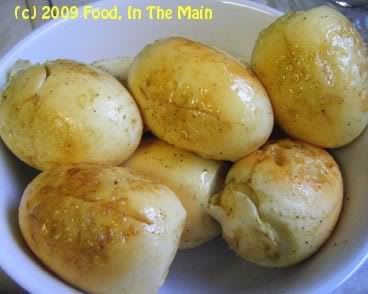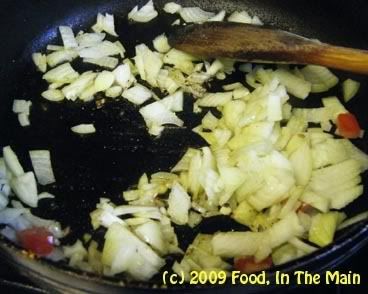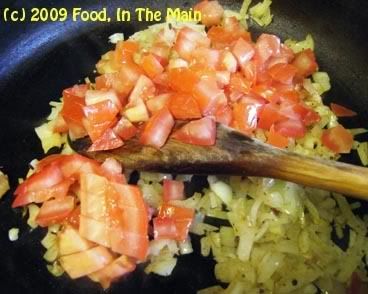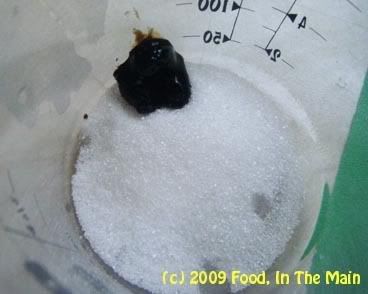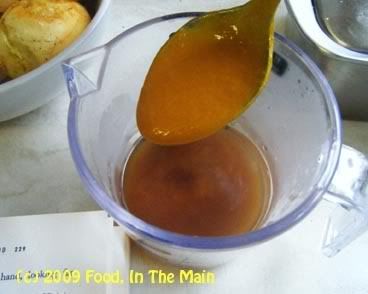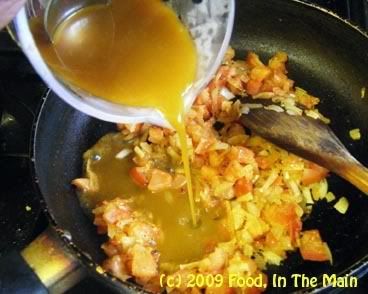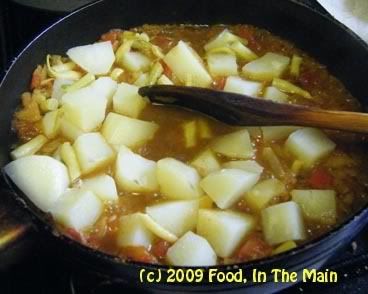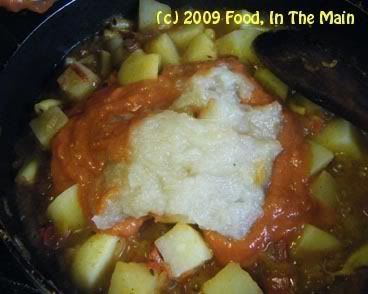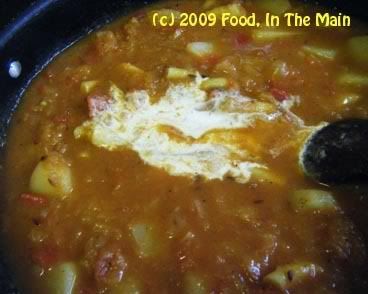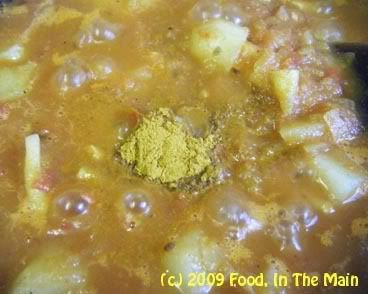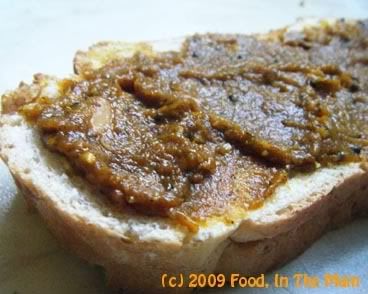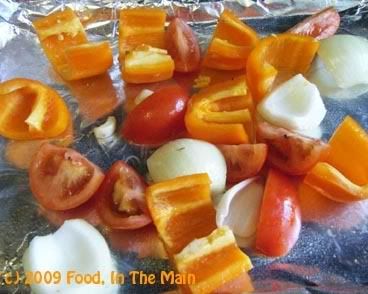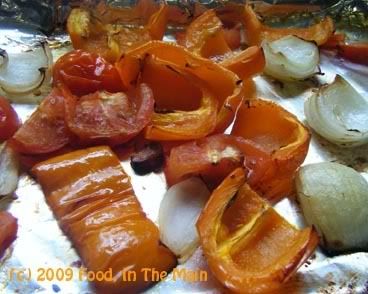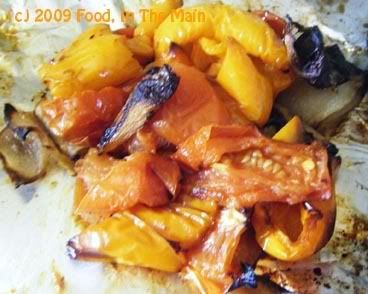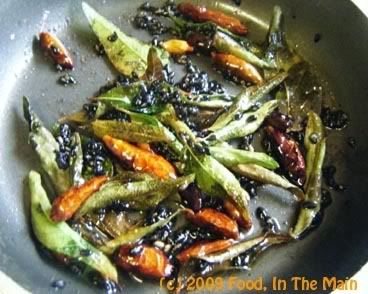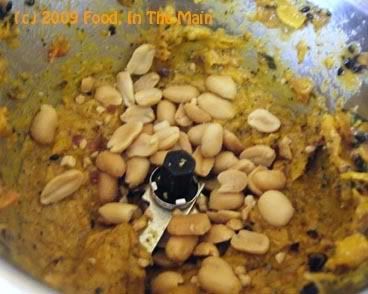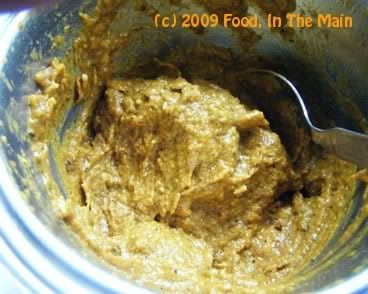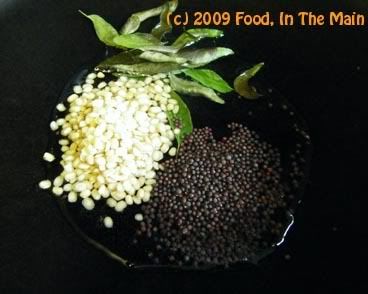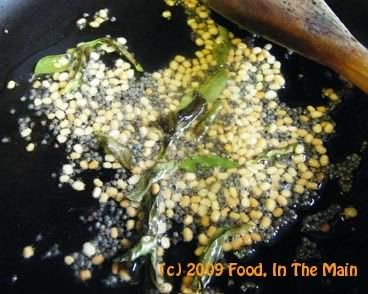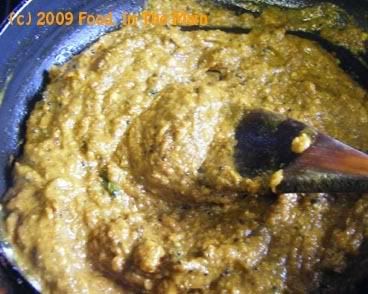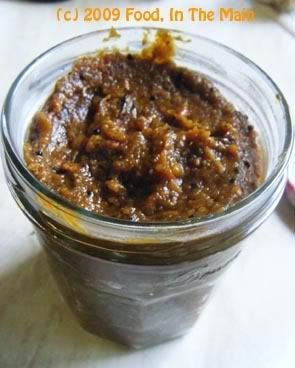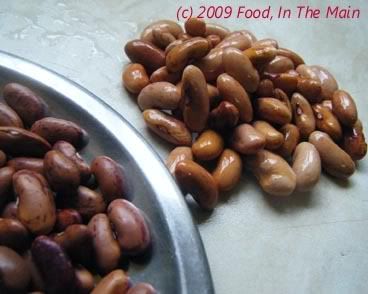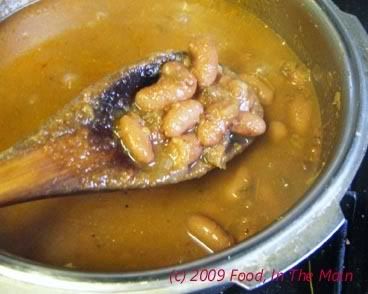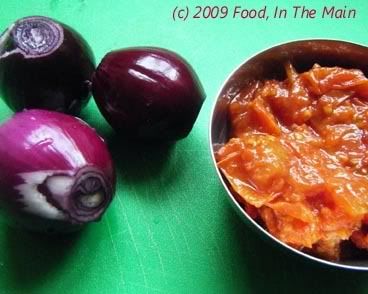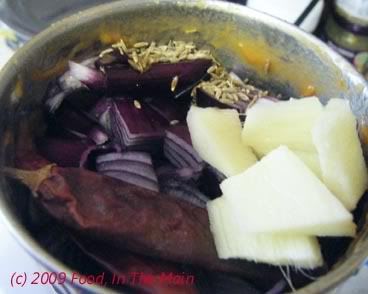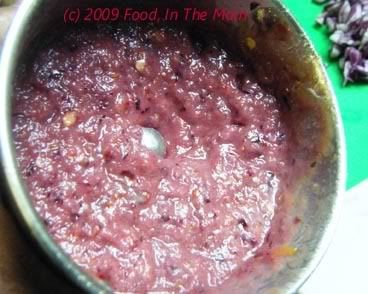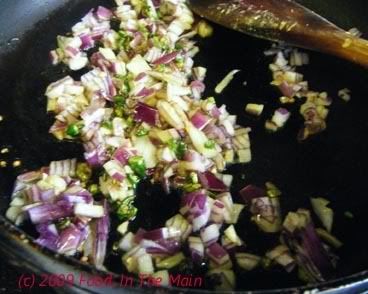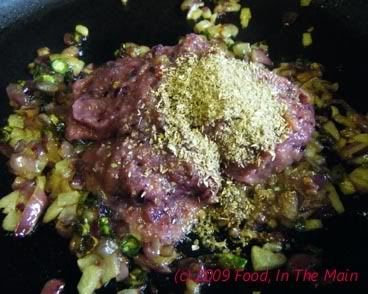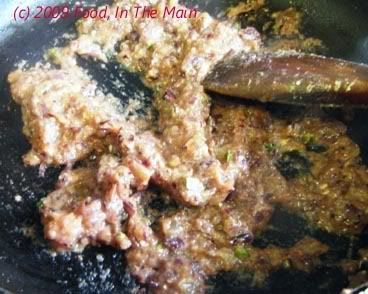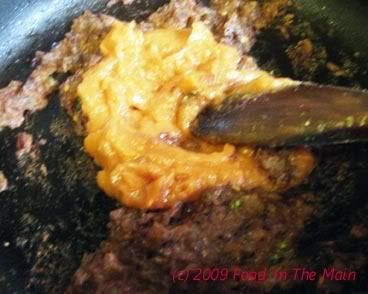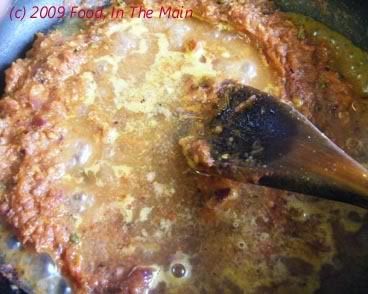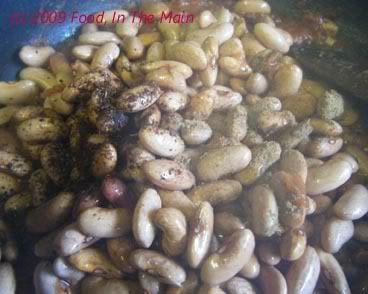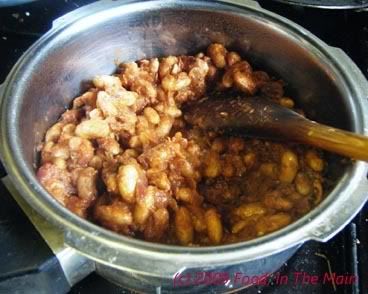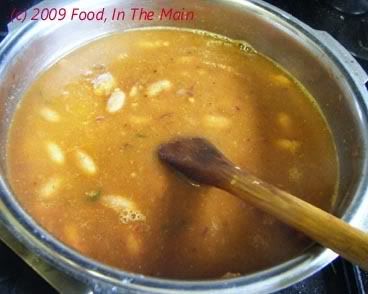I know - gasp! What was I thinking, using store-bought "curry powder"? Me, who used to be authentically Indian and looked down my nose (only a short distance, given that my nose is regrettably lacking in ski-slope proportions) at any recipe that involved the use of "curry powder" especially with the words "mild Madras" preceding the term. Me, who used to be mildly scornful and pitying of the uninformed Brits who relied on curry powders to make their "Indian" curries. That me, now admitting without any apparent embarrassment to having "gone over" to the British side of Indian curries? WTF?
Actually, after years and years of using readymade garam masala powder in various dishes and not thinking twice about it being a store-bought item, I finally came around to admitting that "curry powder" was pretty much the same sort of thing.
However, I do still look down my sadly length-challenged nose at people who use curry powder as the sole flavouring for their versions of curries. My
There, that should pretty much re-establish my credentials. And if it doesn't, here's a gentle reminder - I am now, as my husband chooses to describe, a "Brindian", not an Indian...
Recipe for: Basic vegetable curry
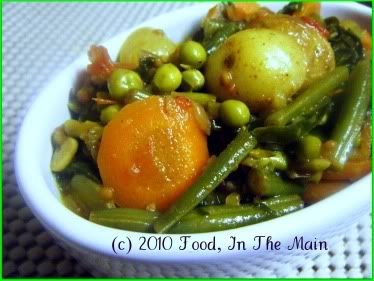
Ingredients:
2-3 small new potatoes, sliced into 1/2-cm thick rounds
1 carrot, peeled and sliced into 1/2-cm thick rounds
1/3 cup fresh or frozen green peas
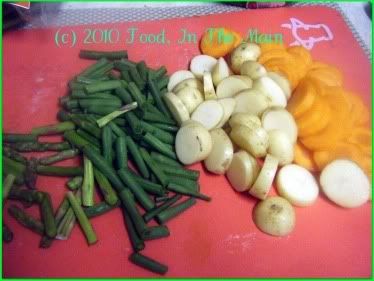
2 small onions, sliced
1/2 cup green beans, sliced 1" long
2 cups baby spinach leaves
1/2 cup roasted tomatoes OR 1 cup tomato puree + 1 tbsp concentrated tomato paste
1-2 small cloves garlic, chopped fine
1/2" piece ginger root, peeled and grated
1 tsp cumin seeds
salt to taste
2 tsp oil
1/2 tbsp mild Madras curry powder
Coriander leaves for garnish
Method:
1. Heat the oil in a wide pan, add the cumin seeds and garlic, and fry on medium-low heat until the garlic softens (about 30 seconds).
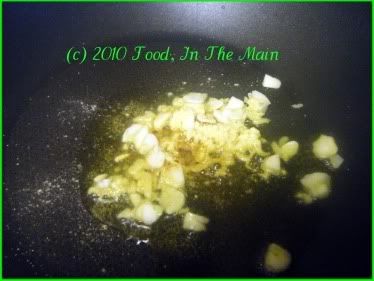
2. Then stir in the sliced onions, grated ginger and turmeric powder and fry till the onions become limp and turn translucent.
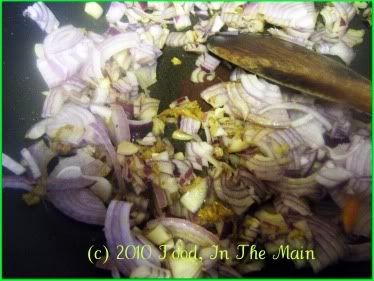
3. Add the sliced potatoes, carrots, green beans and green peas along with 2 cups water and the curry powder.
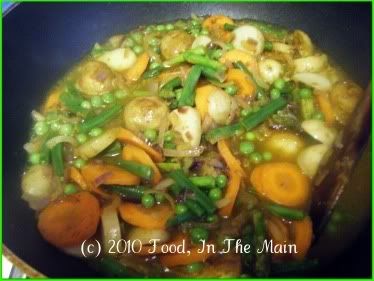
Bring it to a boil on high heat, then turn the heat down to medium and let the vegetables cook for 7-8 minutes.
4. Then add the roasted tomatoes.
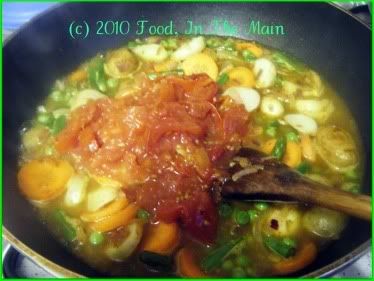
If you're using uncooked pureed tomatoes, turn the heat back up to high after adding the puree + concentrated paste, and let the liquid reduce by half.
5. Let the mixture simmer till the vegetables are fully cooked. Now add the spinach leaves.
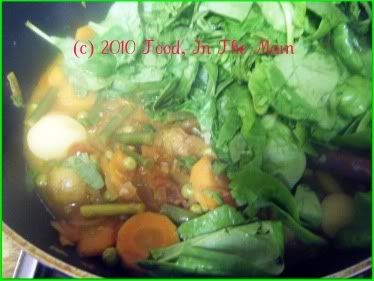
Turn the heat down to low and cover the pan for 3-4 minutes or till the spinach is wilted. Add salt to taste, stir it in well. Leave the curry on the hob for a few minutes more, if the gravy is not thick enough for you.
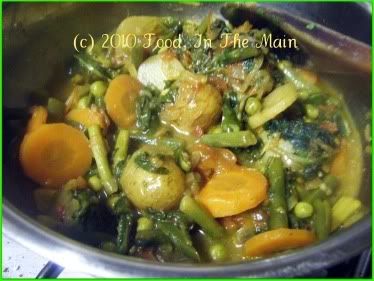
Garnish with coriander leaves and serve hot with plain rice, any Indian pickle and papad.
RECIPE: VEGETABLE CURRY
Ingredients
2-3 small new potatoes, sliced into 1/2-cm thick rounds
1 carrot, peeled and sliced into 1/2-cm thick rounds
1/3 cup fresh or frozen green peas
2 small onions, sliced
1/2 cup green beans, sliced 1" long
2 cups baby spinach leaves
1/2 cup roasted tomatoes OR 1 cup tomato puree + 1 tbsp concentrated tomato paste
1 tsp cumin seeds
1-2 small cloves garlic, chopped fine
1/2" piece ginger root, peeled and grated
salt to taste
2 tsp oil
1/2 tbsp mild curry powder
Coriander leaves for garnish
Method
1. Heat the oil in a wide pan, add the cumin seeds and garlic, and fry on medium-low heat until the garlic softens (about 30 seconds).
2. Then stir in the sliced onions, grated ginger and turmeric powder and fry till the onions become limp and turn translucent.
3. Add the sliced potatoes, carrots green beans and green peas along with 2 cups water and the curry powder. Bring it to a boil on high heat, then turn the heat down to medium and let the vegetables cook for 7-8 minutes.
4. Then add the roasted tomatoes. If you're using uncooked pureed tomatoes, turn the heat back up to high after adding the puree + concentrated paste, and let the liquid reduce by half.
5. Let the mixture simmer till the vegetables are fully cooked. Now add the spinach leaves. Turn the heat down to low and cover the pan for 3-4 minutes or till the spinach is wilted. Add salt to taste, stir it in well. Leave the curry on the hob for a few minutes more, if the gravy is not thick enough for you. Garnish with coriander leaves and serve hot with plain rice, any Indian pickle and papad.

